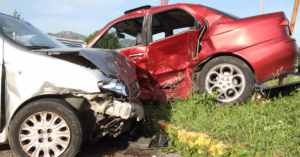
If you have been involved in an auto accident in Connecticut, you may be feeling overwhelmed, confused, and stressed. Car accidents happen quickly, and determining who is at fault for the accident can often be challenging.
However, determining fault for a car accident is an essential step in securing compensation for your injuries. If the other driver caused the accident, you should be able to collect money to pay for your vehicle damage, your injuries, and other expenses and losses.
Read on to learn how insurance companies determine fault after car accidents in Connecticut, then contact our team at Jonathan Perkins Injury Lawyers for assistance.
How Do Insurance Companies Determine Who Is at Fault in a Connecticut Car Accident?
Insurance companies play a major role in determining who is at fault for an auto accident especially before a suit is brought. These companies need to know the circumstances surrounding the accident to determine which party owes the opposing party insurance money for their damages.
Typically, insurance companies in Connecticut determine fault by reviewing the following information.
Police Report
Insurance companies typically review police reports to determine which party is at fault in an accident. As a result, one of the first steps you should take following an auto accident is to call the police to assess the scene and write a report.
Even if the accident was minor, you should ask the police to review the damage and create a written report that you can use to prove negligence down the line.
Evidence
Insurance companies also review all relevant evidence to determine fault following an accident. Any evidence that you can provide following the auto accident will help you prove that the other party is negligent. This evidence may include:
- Photos of the scene
- Photos of the vehicle damage
- The location of traffic signs or signals
- Skid marks and any debris on the road
All of this information can help your insurer understand the scene and determine who is at fault.
Witness Testimonies
Witness testimonies provide valuable evidence to help insurance companies determine fault. Understandably, in many cases, neither driver wants to admit that they caused the accident. However, witnesses can offer an unbiased, outsider perspective of the crash.
Following a car accident, you should look for witnesses who may be able to testify to the circumstances surrounding the accident. Be sure to write down their contact information (their names, telephone numbers, and addresses) in case you need to call them later.
Proving Negligence in Connecticut
Insurance companies use the above information to learn the details of an auto accident and determine negligence.
Connecticut is a comparative negligence state, which means insurance companies may find both drivers partially at fault for the accident. One driver may be 70% responsible while the other is 30% negligent, for example. Unfortunately, you can only seek compensation from the other party if you were less than 50% responsible for the accident.
If you are a victim of a car accident and believe the other driver owes you compensation for your damages and injuries, you need a competent car accident lawyer in Connecticut to represent you. Contact Jonathan Perkins Injury Lawyers today at 800-PERKINS to schedule a consultation. We serve clients throughout Connecticut, with offices in New Haven, Bridgeport, Hartford, Waterbury, and New London.
